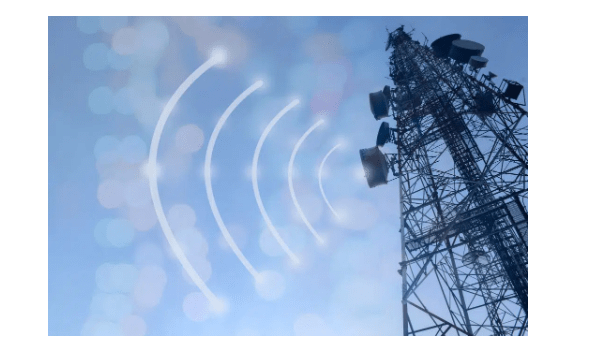Introduction
Understanding Cellular Technology: Its Definition and Fundamental Principles
Cellular technology is the foundation of many mobile devices, characterized by the use of numerous interconnected transmitters instead of a single one. It enables mobile communication by employing a sophisticated two-way radio system between the mobile unit and the wireless network.
The technology utilizes radio frequencies, also known as radio channels, repeatedly throughout a sector market with minimal interference to facilitate a large number of simultaneous conversations. This approach is commonly referred to as frequency reuse.
A key innovation in cellular technology was the concept of “multiple access,” which allows for the transmission of multiple data or voice connections on a single radio channel. This breakthrough has significantly enhanced the efficiency and capacity of cellular networks, enabling seamless communication and connectivity for millions of users worldwide.
Unveiling the Promise of 5G Wireless Technology: Its Definition and Advantages
5G stands for the fifth generation mobile network and represents the latest global wireless standard following the 1G, 2G, 3G, and 4G networks. It heralds a new era of connectivity, designed to link virtually everything and everyone, including objects, machines, and devices.
The primary goal of 5G wireless technology is to provide higher multi-Gbps peak data speeds, massive network capacity, ultra-low latency, improved reliability and availability, and a more seamless user experience for a greater number of users. By enhancing efficiency and performance, 5G enables new user experiences and connects new industries, driving innovation and growth in various sectors.
Who Invented 5G?
No single company or person owns 5G, but there are several corporations within the mobile ecosystem that are contributing to bringing 5G to life. There exists the 3rd Generation Partnership Project (3GPP), the industry organization that defines the global specifications for 3G UMTS (including HSPA), 4G LTE, and 5G technologies. 3GPP is driving many essential inventions across all aspects of 5G design, from the air interface to the service layer. Other 3GPP 5G members range from infrastructure vendors and component/device manufacturers to mobile network operators and vertical service providers.
The Cellular Technologies That Power 5G: An Overview

5G is based on OFDM (Orthogonal frequency-division multiplexing), a method of modulating a digital signal across several different channels to reduce interference. 5G employs 5G NR air interface alongside OFDM principles. 5G also utilizes wider bandwidth technologies such as sub-6 GHz and mmWave.
Similar to 4G LTE, 5G OFDM operates based on the same mobile networking principles. However, the new 5G NR air interface can further enhance OFDM to deliver a much higher degree of flexibility and scalability. This could provide more 5G access to more people and for a variety of different use cases.
5G will provide wider bandwidths by expanding the usage of spectrum resources, from sub-3 GHz used in 4G to 100 GHz and beyond. 5G can operate in both lower bands (e.g., sub-6 GHz) as well as mmWave (e.g., 24 GHz and up), which will bring extreme capacity, multi-Gbps throughput, and low latency.
5G is designed to not only deliver better and faster mobile broadband services compared to 4G LTE, but it can also expand into new service areas such as mission-critical communications and connecting the massive Internet of Things (IoT). This is enabled by many new 5G NR air interface design techniques, such as a new self-contained TDD subframe design.
What Sets 5G Apart from Previous Mobile Network Generations?
The previous generations of mobile networks are 1G, 2G, 3G, and 4G. They are summarized as follows:
1G – 1st generation: In the 1980s, 1G provided analog voice.
2G – 2nd generation: 2G was digital as opposed to analog. It introduced encryption. In the early 1990s, 2G ushered in digital voice (e.g. CDMA – Code Division Multiple Access). GSM (Global System for Mobile Communications) was the original 2G standard launched in 1991.
3G – 3rd generation: In the early 2000s, 3G brought mobile data (e.g. CDMA 2000). The 3G rollout of GSM employed CDMA. It introduced higher transfer rates, up to 200 bit per second, and later versions achieved multiple megabits per second.
4G LTE – 4th generation: 4G LTE introduced the era of mobile broadband internet services that were provided to external systems such as wireless modems and laptops.
1G, 2G, 3G, and 4G paved the way to 5G, which is designed to provide more connectivity than was available before.
5G is a unified, more capable air interface. It has been designed with an extended capacity to enable next-generation user experiences, empower new deployment models and deliver new services.
Employing superior reliability, high speeds, and very small latency, 5G will expand the mobile ecosystem into new realms. 5G will affect every industry. It will make remote healthcare, digitized logistics, safer transportation, precision agriculture, and much more a reality.
How is 5G Superior to 4G?
A: There are many reasons that 5G will be better than 4G:
5G has more capacity than 4G. 5G is designed to support a 100x increase in traffic capacity and network efficiency.
5G is significantly faster than 4G. 5G can be significantly faster than 4G, delivering up to 20 Gigabits-per-second (Gbps) peak data rates and 100+ Megabits-per-second (Mbps) average data rates.
5G has much lower latency than 4G. 5G has significantly lower latency to deliver more instantaneous, real-time access: a 10x decrease in end-to-end latency down to 1ms.
5G is a unified platform that is more capable than 4G. While 4G LTE focuses on delivering much faster mobile broadband services than 3G, 5G is designed to be a unified, more capable platform that not only elevates mobile broadband experiences, but also supports new services such as mission-critical communications and the massive IoT. 5G can also natively support all spectrum types (licensed, shared, unlicensed) and bands (low, mid, high), a wide range of deployment models (from traditional macro-cells to hotspots), and new ways to interconnect (such as device-to-device and multi-hop mesh).
5G utilizes spectrum more effectively than 4G. 5G is also designed to get the most out of every bit of spectrum across a wide array of available spectrum regulatory paradigms and bands—from low bands below 1 GHz, to mid bands from 1 GHz to 6 GHz, to high bands known as millimeter wave (mmWave).
The Economic Impact of 5G: How and When Will it Shape the Global Economy?

5G is empowering global growth:
$13.1 Trillion dollars of global economic output
22.8 Million new jobs created
$265B global 5G capital expenditures and R&D annually over the next 15 years
In a 5G economic study, it was found that 5G’s full economic effect will likely be realized across the globe by 2035. This will support a broad range of industries and potentially enable up to $13.1 trillion worth of goods and services.
This impact is much greater than previous network generations. The development requirements of the new 5G network are also expanding beyond the traditional mobile networking players to industries such as the automotive industry.
The study also revealed that the 5G value chain (including OEMs, operators, content creators, app developers, and consumers) could alone support up to 22.8 million jobs. There are also many emerging and new applications that will still be defined in the future.
Where is 5G Being Used?
5G is employed across three primary types of connected services, including enhanced mobile broadband, mission-critical communications, and the massive IoT. A critical capability of 5G is that it is designed for forward compatibility, which is the ability to flexibly support future services that are unknown today.
In addition to improving smartphones, 5G mobile technology can introduce new immersive experiences such as VR and AR with faster, more uniform data rates, lower latency, and lower cost-per-bit.
5G can enable new services that can transform industries with ultra-reliable, available, low-latency links like remote control of critical infrastructure, vehicles, and medical procedures.
5G is designed to connect an enormous number of embedded sensors in everything through the ability to scale down in data rates, power, and mobility. This will provide extremely lean and low-cost connectivity solutions.
How Do Consumers Use 5G?

The typical consumer is expected to use close to 11 GB of data per month on their smartphone in 2022. This is driven by explosive growth in video traffic as mobile is increasingly becoming the source of media and entertainment, as well as the massive growth in always-connected cloud computing and experiences.
4G completely changed how we consume information. In the past decade we have witnessed leaps and bounds in the mobile app industry around services such as video streaming, ride sharing, food delivery and more.
5G will expand the mobile ecosystem to new industries. This will contribute to cutting-edge user experiences such as boundless extreme reality (XR), seamless IoT capabilities, new enterprise applications, local interactive content and instant cloud access.
5G can transform home internet service by providing a wireless modem alternative to existing wires. Internet Service Providers (ISPs) can now serve customers using 5G infrastructure. This can make the coverage, performance and deployment flexibility of 5G a compelling alternative to fiber, DSL or cabled solutions.
Is 5G Available Now?
5G is already here today, and global operators started launching new 5G networks in early 2019. Also, all major phone manufacturers are commercializing 5G phones. And soon, even more people may be able to access 5G.
5G has been deployed in 60+ countries and counting. There is a much faster rollout and adoption compared with 4G. In addition to very high speeds and low latencies, 5G also provides the capability for mission-critical services, enhanced mobile broadband and massive IoT.
Do You Need a New Phone to Access 5G Technology?
Accessing 5G Technology: Do You Need a New Smartphone?
To use the 5G network, you will need a new smartphone that supports 5G. For instance, smartphones powered by the Snapdragon 5G Mobile Platforms are compatible with 5G technology.
Fortunately, there is a growing selection of new mobile phones designed to support 5G, and multiple carriers worldwide are adopting the 5G wireless network. As the 5G rollout continues, more smartphones and carrier subscriptions will become available, making 5G technology and compatible devices more accessible to the general public.